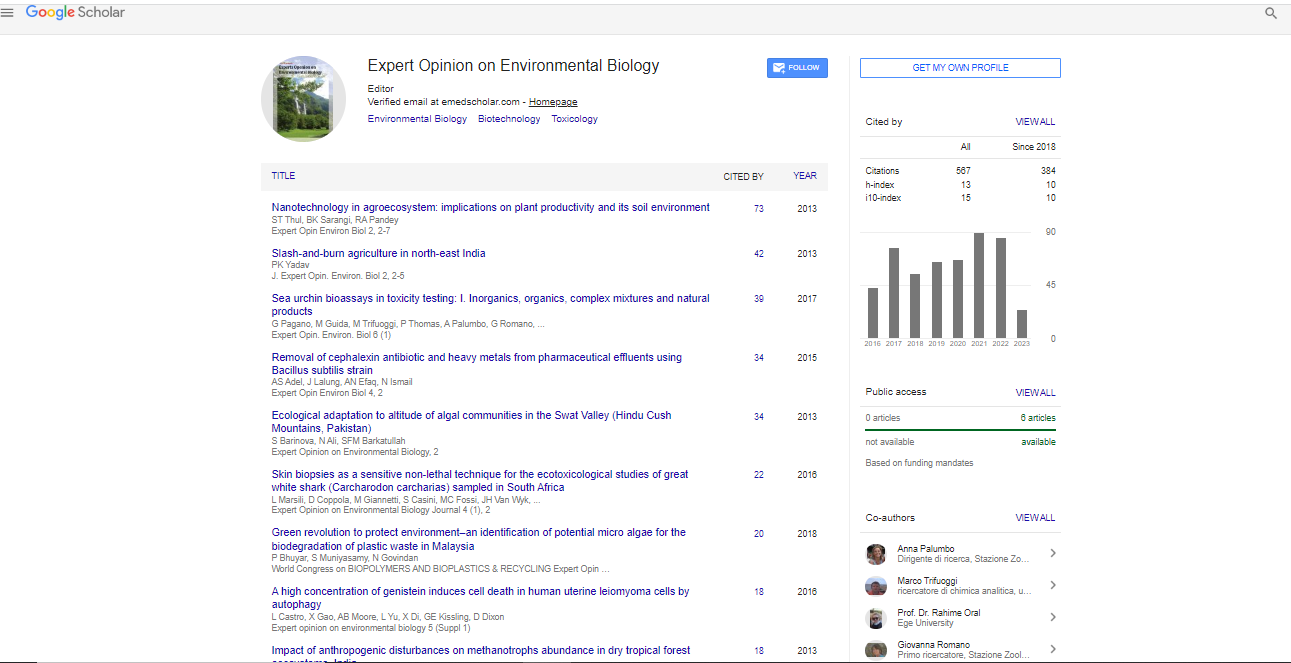Validating the impact of water potential and temperature on seed germination of wheat (Triticum aestivum L.) via Hydrothermal Time Model
Saleha Saeed
University of Peshawar, Pakistan
: Expert Opin Environ Biol
Abstract
Wheat is the most extensively cultivated crop and occupies a central place in human nutrition providing 20% of the daily food calories. This study was conducted to find both T and ψ effects on wheat germination and the cardinal Ts value; a lab experiment was accomplished using HTT models. Cultivars were germinated under different accelerated aging periods (AAP, 0, 24, 48, and 72 h) at each of the following constant Ts of 15, 20, 25, 30, and 35 â?¦C at each of the ψs of 0, −0.05, −0.1, −0.15, and −0.2 MPa. GR, GP, and other germination parameters (GI, GRI, CVG, SVI-I, SVI-II, GE, and MGT) were significantly determined by solute potential, temperature, and reciprocal action in both cultivars (p ≤ 0.01). Depending on the confidence interval of the model co-efficiently between cultivars, there was no significant difference. Hence, the average of cardinal Ts was 15, 20, and 35 â?¦C for the Tb, To, and Tc, respectively, in the control condition (0 MPa). Hydro-time values declined when Ts was raised to To in cultivars, then remained constant at Ts ≥ To (2.4 MPah−1 in Pirsabak 15 and 0.96 MPah−1 in Shahkar). The slope of the relationship between ψb(50) and TTsupra with temperature when Ts is raised above To and reaches 0 at Tc. In conclusion, the assessed parameter values in this study can easily be used in simulation models of wheat germination to quantitatively characterize the physiological status of wheat seed populations at different Ts and ψs.
Biography
Saleha Saeed. belong to Pakistan (Peshawar). she completed her MPhil in Botany at the University of Peshawar, Pakistan. Research specialist in plants physiology. Visiting lecture in University of Peshawar.
 Spanish
Spanish  Chinese
Chinese  Russian
Russian  German
German  French
French  Japanese
Japanese  Portuguese
Portuguese  Hindi
Hindi 
